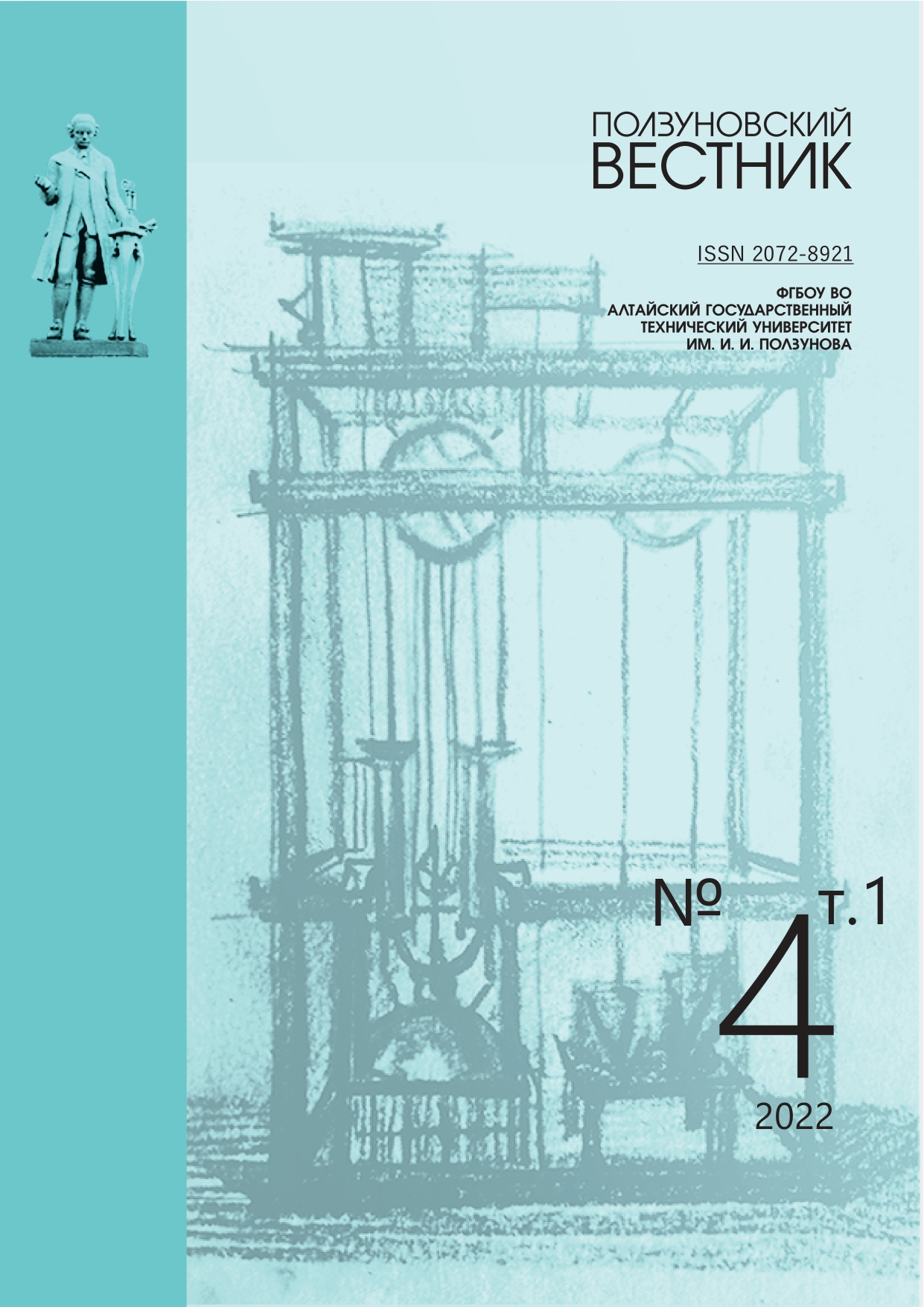HYDROTHERMAL TREATMENT OF BUCKWHEAT WITH TWO-STAGE GRAIN MOISTENING IN A SCREW VACUUM INSTALLATION
EHGDSJ
DOI:
https://doi.org/10.25712/ASTU.2072-8921.2022.04.004Keywords:
grain, buckwheat, hydrothermal treatment, moistening, resting, drying, screw vacuum installation, laboratory huller, coefficient kernel integrity, grain husking coefficient, complete factor experiment.Abstract
The process of hydrothermal treatment (HT) of buckwheat, including two-stage grain moistening in a screw vacuum installation, resting after each stage of moistening and drying, has been studied. In the research, buckwheat grain of the 2021 harvest, grown in the Altai Territory, was used. The grain was husked on a laboratory huller. The first fraction of buckwheat that passed the HT was sent for husking. The husking products were sorted on a set of sieves (with a metal cloth sieve No. 08 and with holes of 1.7×20 mm), the husk was sifted on a laboratory aspirator. Based on the results of previously conducted single-factor experiments, a plan for a complete factor experiment of CFE 23 was developed and implemented. Taking into account the fact that in earlier studies, the values of some of the main factors of the HT process under study were selected, namely: grain moisture after the first moistening of 22 ± 0.2%; the duration of resting after the first moistening of 4 hours; residual air pressure in the installation during the first and second moistening of 0.05 MPa; duration of resting after the second moistening is 4 h, the remaining factors were selected as variable factors: grain moisture after the second moistening and drying process parameters - drying agent temperature and grain moisture after drying.
After the implementation of the complete factor experiment and the processing of experimental data, regression equations has been drawn up that adequately describe the buckwheat HT process for the kernel integrity and grain husking coefficients considered as the process yield. Based on the regression equation for the kernel integrity coefficient, an optimization program using the Box-Wilson procedure has been drawn up and implemented.
Taking into account the implementation of one-factor and multifactor experiments, the following optimal conditions of buckwheat HT with double moistening, resting and grain drying were obtained: grain humidity after the second moistening - 30±0,5 %; residual air pressure in the screw vacuum unit - 0.05 MPa; grain humidity after drying - 13.5-14.0%, drying agent temperature - 165-170 °C.
References
Рынок круп (рис, гречка, геркулес, пшено) в России: итоги 2021 года. ‒ Режим доступа: https://www.moshol14.ru/press-centr/novosti-rynka/ rynok-krup.
Рынок гречихи и гречневой крупы - тенденции и прогнозы. ‒ Режим доступа: https://ab-centre.ru/news/rynok-grechihi-i-grechnevoy-krupy---tendencii-i-prognozy.
Christa, K. Buckwheat grains and buckwheat products – nutritional and prophylactic value of their components – a review / K. Christa., M. Soral-Śmietana // Czech J. Food Sci. – 2008. – Vol. 26 (3). – P. 153–162.
Анисимова, Л.В. Влияние гидротермической обработки зерна на белковый комплекс крупяных продуктов / Л.В. Анисимова // Ползуновский вестник. – 2012. – № 2/2. – С. 158‒162.
Залесская, Е.В. Влияние гидротермической обработки на технологические свойства зерна гречихи, белковый и липидный компоненты крупы: автореф. дис. ... канд. техн. наук: 05.18.02 / Залесская Елена Вадимовна. – Москва, 1976. – 22 с.
Kato, N. Nutritional and physiological functions of buckwheat protein / N. Kato, J. Kayashita, H. Tomotake // Recent Research Development Nutrition. – 2001. – 4. – P. 113–119.
Казаков, Е.Д. Биохимия зерна и хлебопродуктов / Е.Д. Казаков, Г.П. Карпиленко. – СПб. : ГИОРД, 2005. – 512 с.
Stibilj, V. Enhanced selenium content in buckwheat (Fagopyrum esculentum Moench) and pumpkin (Cucurbita pepo L.) seeds by foliar fertilization / V. Stibilj, I. Kreft, P. Smrkolj, J. Osvald // European Food Research and Technology. – 2004. – 219. – P. 142–144.
Wei, Y. Studies on the amino acid and mine-ral content of buckwheat protein fractions / Y. Wei, X. Hu, G. Zhang, S. Ouyang // Nahrung. – 2003. – 47(2) . – P. 114–116.
Анисимова, Л.В. Влияние гидротермической обработки зерна гречихи на зольность и белизну крупы и муки / Л.В. Анисимова, С.В. Якушев // Известия высших учебных заведений. Пищевая технология. – 2004. – № 4. – С. 33–35.
Малютин, А.В. Влияние гидротермической обработки гречихи с интенсивным увлажнением зерна на эффективность его шелушения / А.В. Малютин, А.Ю. Бавыкин, С.В. Якушев, Л.В. Анисимова // Горизонты образования. – 2018. – № 20. – С. 4–22.
Бавыкин, А.Е. Исследование гидротермической обработки гречихи с двухэтапным увлажнением зерна под вакуумом / А.Е. Бавыкин, С.В. Якушев, Л.В. Анисимова // В сборнике: Наука и молодежь. Материалы XVI Всероссийской научно-технической конференции студентов, аспирантов и молодых ученых. Министерство науки и высшего образования РФ, ФГБОУ ВО «Алтайский государственный технический университет им. И.И. Ползунова» . – 2019. – С. 321–324.
Патент 2527294 С2 Российская Федерация, МПК B02B 1/04. Устройство для интенсивного увлажнения зерна : № 2012154778/13 : заявл. 17.12.2012 : опубл. 27.06.2014 / Анисимова Л.В., Якушев С.В., Выборнов А.А. ; заявитель и патентообладатель ФГБОУ ВПО «Алтайский государственный технический университет им. И.И. Ползунова». – 6 с.
Правила организации и ведения технологического процесса на крупяных предприятиях. Часть 1. – Москва : ЦНИИТЭИ хлебопродуктов, 1990. – 81 с.
Downloads
Published
How to Cite
Issue
Section
License
Copyright (c) 2022 Ludmila V. Anisimova, Sergey V. Yakushev, Andrey E. Zemerov

This work is licensed under a Creative Commons Attribution 4.0 International License.















 .
. This work is licensed under a
This work is licensed under a 
